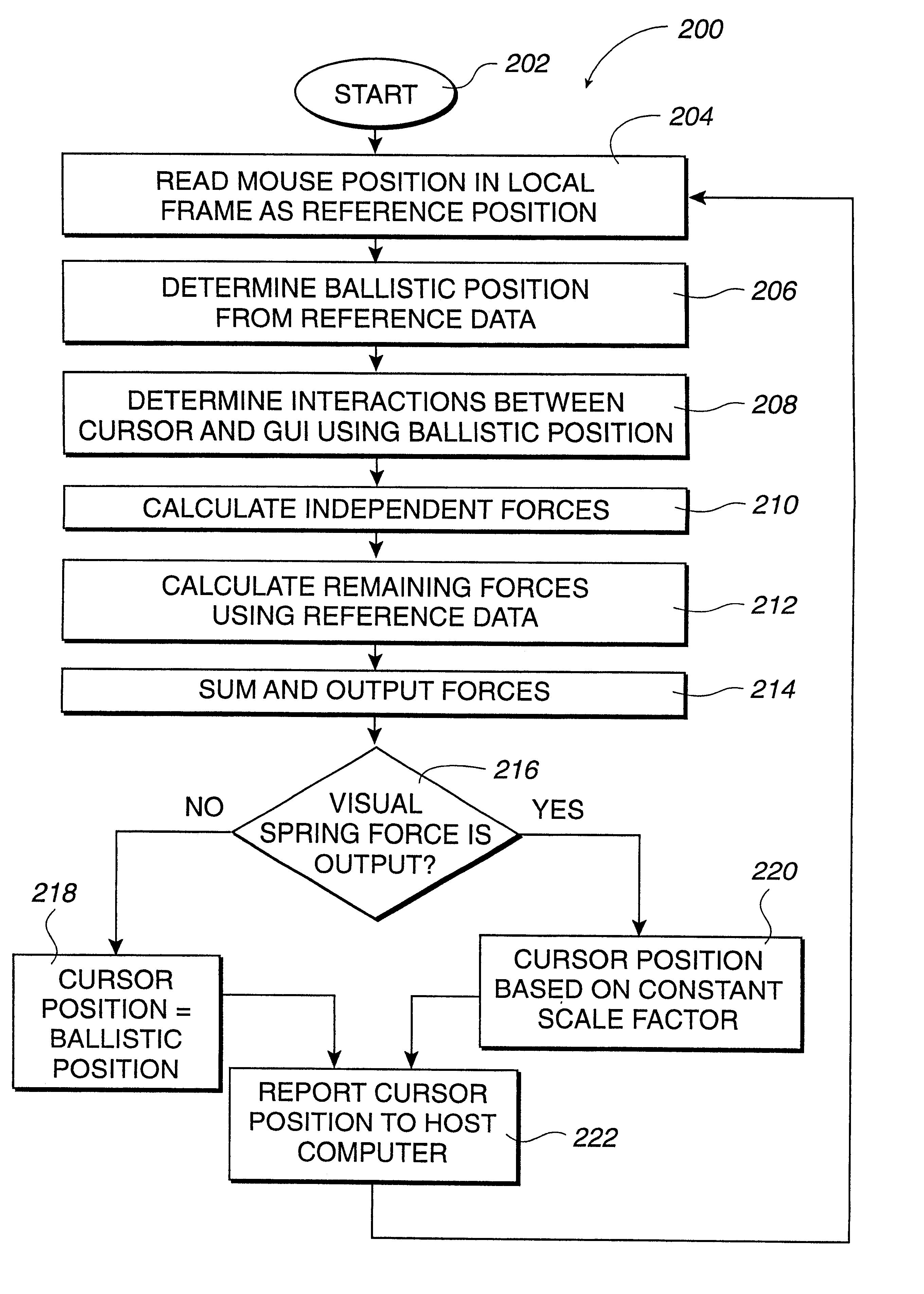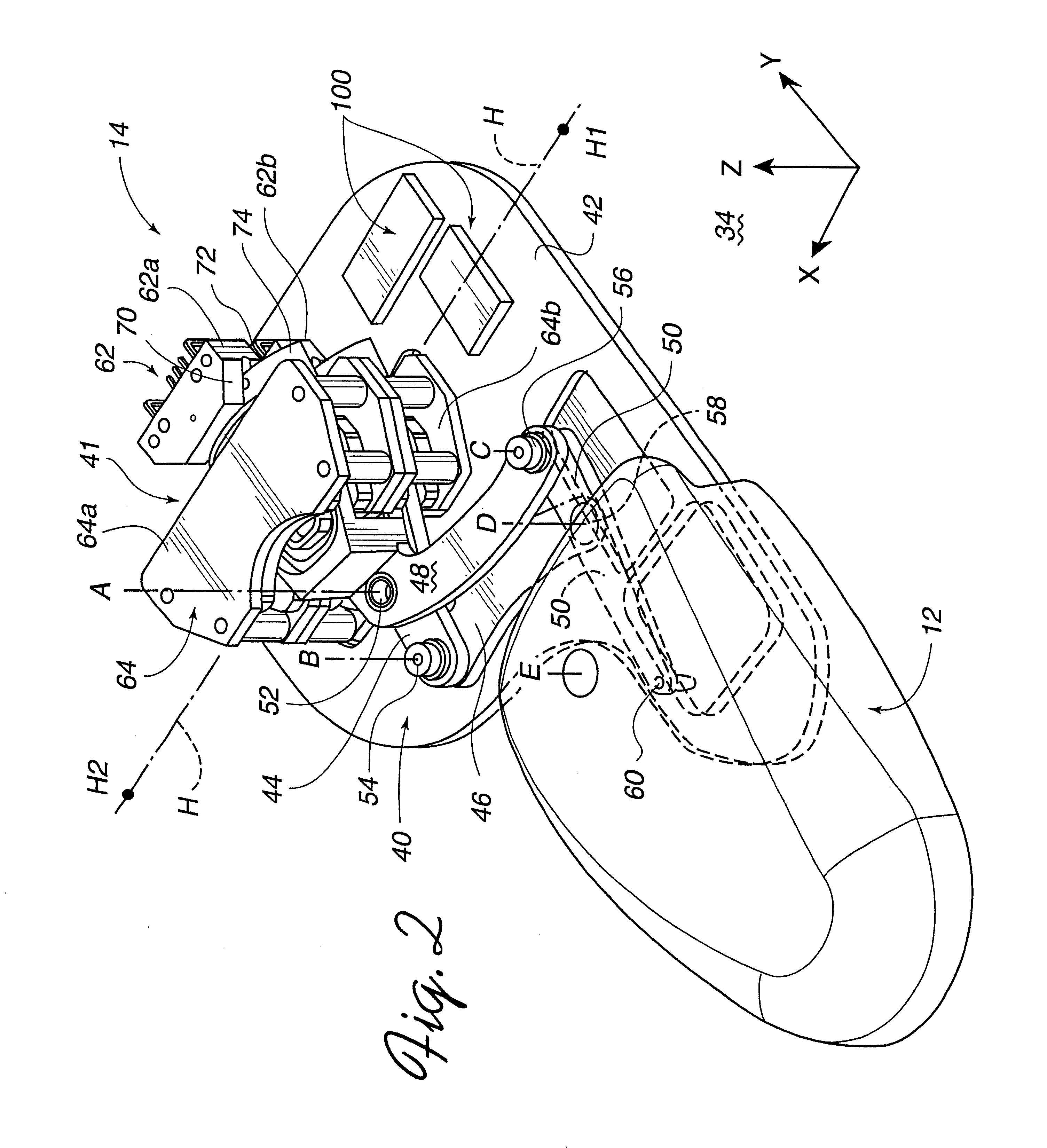Cursor control using a tactile feedback device
a tactile feedback and cursor technology, applied in the field of interface devices, can solve the problems of insufficient or even harmful scaling of mouse movement to cursor movement, user simply lacks manual dexterity to acquire the target, and achieves the effect of enhancing cursor control and not compromising the fidelity of force feedback
- Summary
- Abstract
- Description
- Claims
- Application Information
AI Technical Summary
Benefits of technology
Problems solved by technology
Method used
Image
Examples
Embodiment Construction
[0041]FIG. 1 is a perspective view of a force feedback mouse interface system 10 of the present invention capable of providing input to a host computer based on the user's manipulation of the mouse and capable of providing force feedback to the user of the mouse system based on events occurring in a program implemented by the host computer. Mouse system 10 includes a mouse or “puck”12, an interface 14, and a host computer 18. It should be noted that the term “mouse” as used herein, indicates an object 12 generally shaped to be grasped or contacted from above and moved within a substantially planar workspace (and additional degrees of freedom if available). Typically, a mouse is a smooth or angular shaped compact unit that snugly fits under a user's hand, fingers, and / or palm, but may be shaped otherwise in other embodiments.
[0042]Mouse 12 is an object that is preferably grasped or gripped and manipulated by a user. By “grasp,” it is meant that users may releasably engage a portion o...
PUM
 Login to View More
Login to View More Abstract
Description
Claims
Application Information
 Login to View More
Login to View More - R&D
- Intellectual Property
- Life Sciences
- Materials
- Tech Scout
- Unparalleled Data Quality
- Higher Quality Content
- 60% Fewer Hallucinations
Browse by: Latest US Patents, China's latest patents, Technical Efficacy Thesaurus, Application Domain, Technology Topic, Popular Technical Reports.
© 2025 PatSnap. All rights reserved.Legal|Privacy policy|Modern Slavery Act Transparency Statement|Sitemap|About US| Contact US: help@patsnap.com



